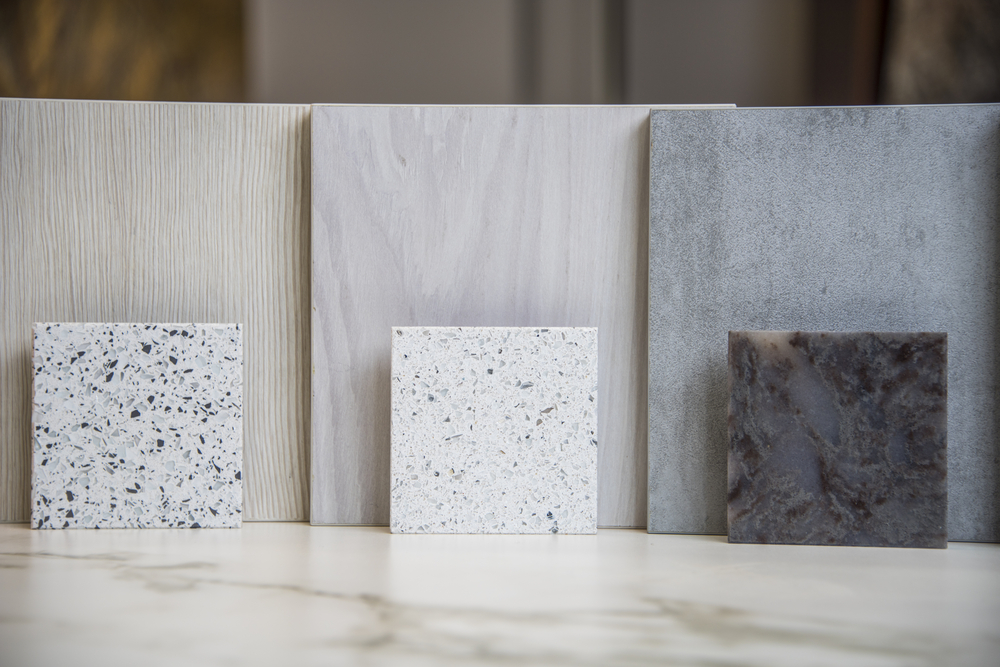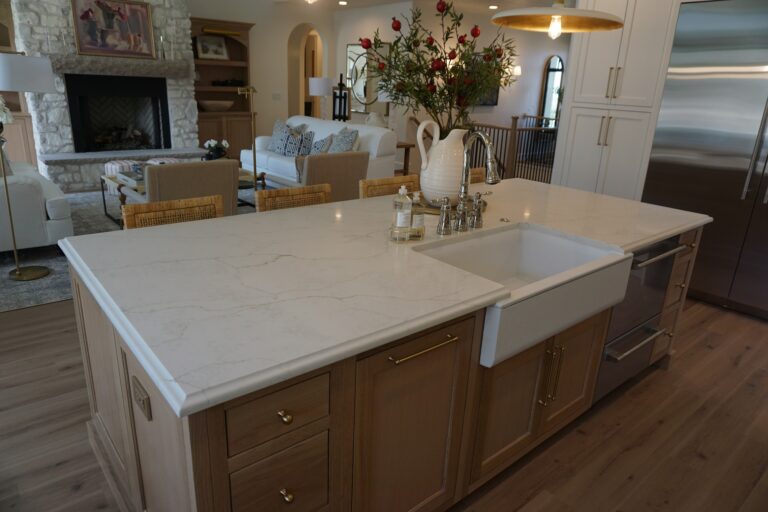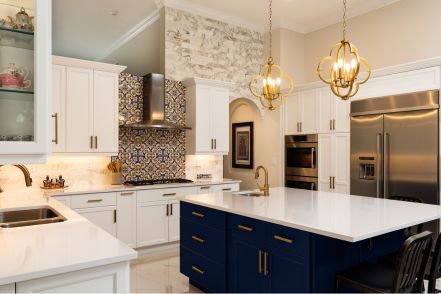There are several different viable options out there if you’re looking to remodel your kitchen with upgraded countertops, and two of the most common that many homeowners often choose between are solid surface and natural stone. Referring to two different kinds of materials that each comes with its own set of specific benefits and potential drawbacks, this decision often comes down to personal preference in a few given areas.
At Creative Granite & Design, we’re proud to stock a variety of both these options, from beautiful natural stone options like marble or granite countertops to our wide selection of solid surface options from providers like Hanex and Corian. Today’s blog will detail some of the basic differences between these options, from their composition to their various qualities and maintenance needs once installed in your home.

Basic Composition
For starters, it’s important to understand the variations in what these basic products are made from. Natural stone, as the name suggests, is generally a solid slab made from one of several stones found naturally all over the globe, including granite, marble, soapstone and many others. These stones are mined from their natural locations, then cut into portions for countertops and other home installations.
Solid surface countertops, on the other hand, are manufactured using a modified mixture of various forms of marble and mineral dust, plus binding products like plastics or polymers that hold everything together. In many cases, pigments and other substances will also be added to natural stone to create certain desired effects.
Strength
When it comes to strength and durability, you honestly can’t go wrong with either choice – both are very strong compared to other countertop materials. Natural stone, however, is slightly more prone to chipping or cracking, and such damage is often permanent when it takes place.
If you fear these risks, solid surface might be a better choice. It can also scratch or crack, but it’s generally possible to repair using sanding and refinishing methods. At the same time, if you do a good job protecting your countertops generally, natural stone choices will do just fine.
Aesthetics
Part of the draw of natural stone countertops is the fact that each piece is unique – no two slabs are the same. At the same time, this does mean that if you need multiple slabs to fill your space, their veining and precise colors might differ.
Solid surface countertops, on the other hand, are manmade and therefore not unique. But they can be molded into virtually any form, meaning you can achieve perfect uniformity in the kitchen even if you’re using multiple slabs – which, by the way, can be fused together in invisible ways if needed.
Maintenance Requirements
Both countertop types will require some basic occasional maintenance, such as washing with water and mild detergent. The only difference here is sealant – natural stone countertops are often porous, meaning they need to have sealant applied every couple years to protect them. Solid surface countertops are not porous, and therefore do not require this sealant, but this isn’t a huge difference because such products are affordable and you only need them every few years.
For more on the differences between natural stone and solid surface countertops, or to learn about any of our custom granite countertops or other materials, speak to the staff at Creative Granite & Design today.





